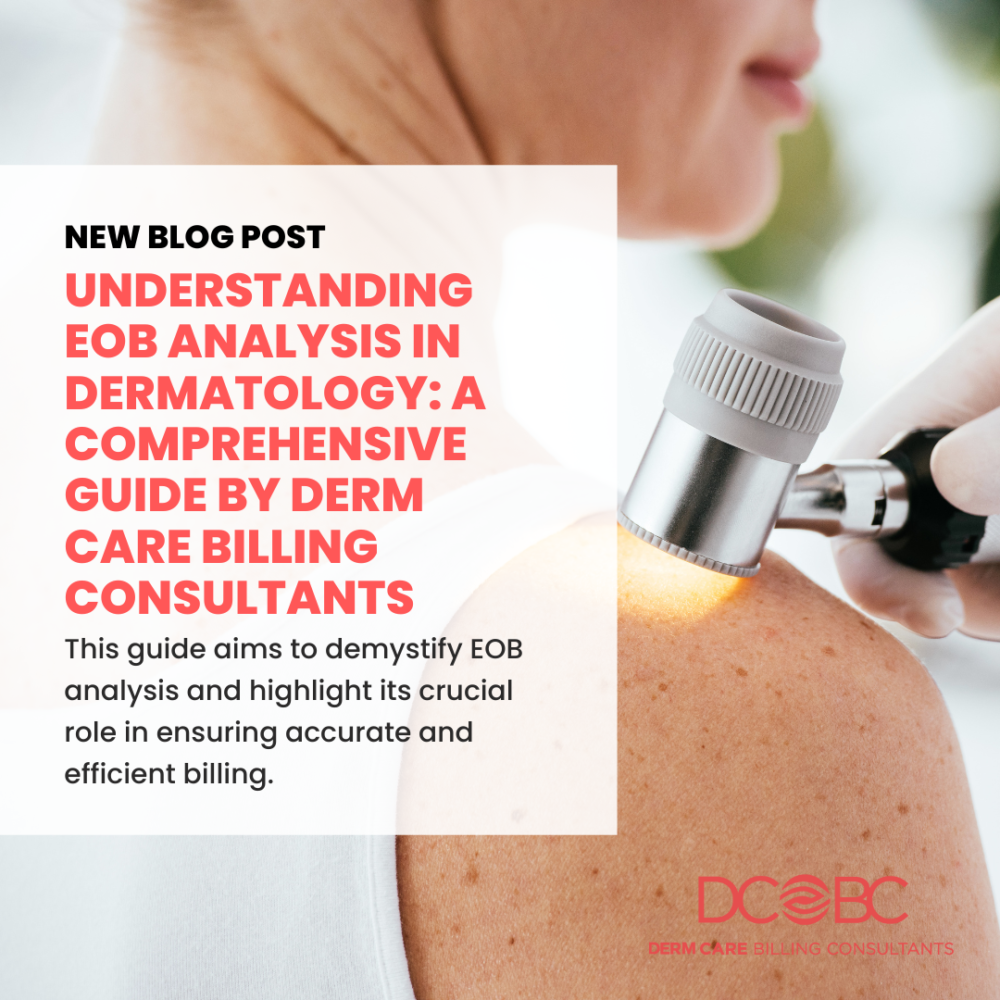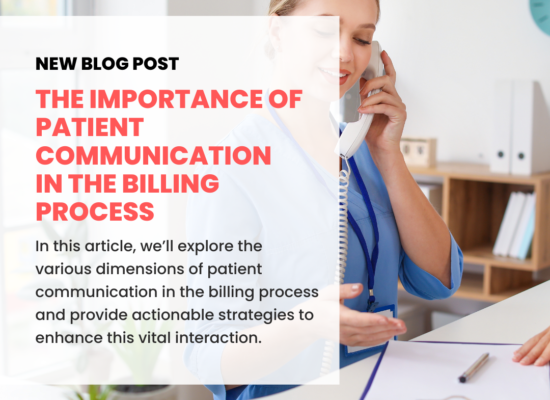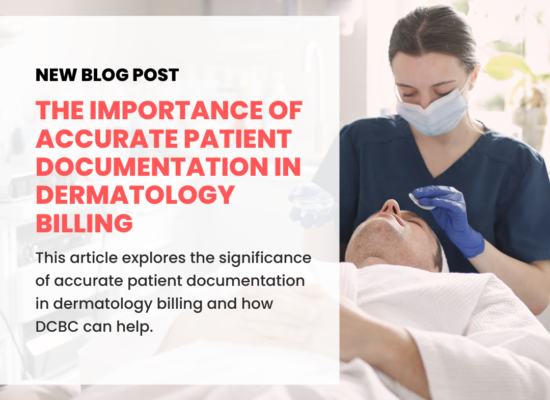In the intricate world of medical billing, Explanation of Benefits (EOB) analysis plays a pivotal role, especially within specialized fields such as dermatology. Derm Care Billing Consultants bring you an in-depth look into EOB analysis, its significance, and how it can streamline the billing process for dermatology practices. This guide aims to demystify EOB analysis and highlight its crucial role in ensuring accurate and efficient billing.
What is EOB Analysis?
Explanation of Benefits (EOB) is a document provided by insurance companies to patients and providers detailing how a claim was processed. EOB analysis involves a thorough review of these documents to ensure that payments are correct and that any discrepancies or denials are addressed promptly. In dermatology, where treatments and procedures can be complex and varied, EOB analysis becomes even more critical.
The Importance of EOB Analysis in Dermatology
Dermatology practices often deal with a wide range of services, from routine skin checks to advanced procedures like Mohs surgery. Each service has its own set of billing codes and reimbursement rates, which can lead to errors in claim processing. It helps in:
- Identifying Errors: By reviewing EOBs, practices can spot errors such as incorrect coding, underpayments, or overpayments.
- Appealing Denials: EOB analysis provides the necessary information to appeal denied claims, ensuring that practices receive the payments they are entitled to.
- Improving Cash Flow: Timely and accurate EOB can significantly improve the cash flow of a dermatology practice by reducing the time spent on follow-ups and appeals.
Steps in EOB Analysis
It involves several key steps:
- Receiving and Organizing EOBs
The first step is to ensure that all EOBs are received and organized systematically. This can be facilitated by using electronic billing systems that automatically sort and store EOBs. - Reviewing EOBs for Accuracy
Each EOB must be reviewed to check for accuracy in the following areas:- Patient Information: Ensure that the patient’s name, date of service, and other identifying details are correct.
- Service Codes: Verify that the codes billed match the services rendered.
- Payment Amounts: Confirm that the payments align with the expected reimbursement rates.
- Identifying and Addressing Discrepancies
Any discrepancies identified during the review must be addressed promptly. This may involve:- Correcting Coding Errors: If incorrect codes were used, they need to be corrected and resubmitted.
- Appealing Denials: If a claim was denied, gather the necessary documentation to file an appeal.
- Following Up on Underpayments: Contact the insurance company to rectify any underpayments.
Tools and Software
To streamline the process, many dermatology practices use specialized billing software. These tools can automatically flag potential issues and provide detailed reports, making it easier to manage EOBs.
Some popular features include:
- Automated Error Detection: Software can automatically identify common errors and discrepancies.
- Appeal Management: Tools to track and manage the appeal process efficiently.
- Reporting and Analytics: Generate reports to analyze trends and improve billing practices.
Case Study
Let’s look at a real-world example of how EOB analysis can benefit a dermatology practice. A medium-sized dermatology clinic noticed a significant number of claim denials related to Mohs surgery. After conducting an EOB analysis, they discovered that the issue stemmed from incorrect coding. By correcting the codes and resubmitting the claims, the clinic was able to recover thousands of dollars in previously denied payments.
Best Practices
To maximize the effectiveness, consider the following best practices:
- Regular Training: Ensure that billing staff are regularly trained on the latest coding and billing practices.
- Use of Technology: Leverage billing software to automate and streamline the EOB analysis process.
- Proactive Follow-Up: Be proactive in following up on discrepancies and denials to minimize payment delays.
Conclusion
EOB analysis is an indispensable part of medical billing, particularly in the specialized field of dermatology. By conducting thorough and timely EOB analysis, dermatology practices can ensure accurate payments, reduce denials, and improve their overall financial health. Derm Care Billing Consultants are dedicated to helping dermatology practices navigate the complexities of EOB analysis and achieve billing excellence.
This was written by Derm Care Billing Consultants, a leading provider of billing solutions tailored for dermatology practices. For more information on how we can assist your practice with this, and other billing needs, please contact us today.





